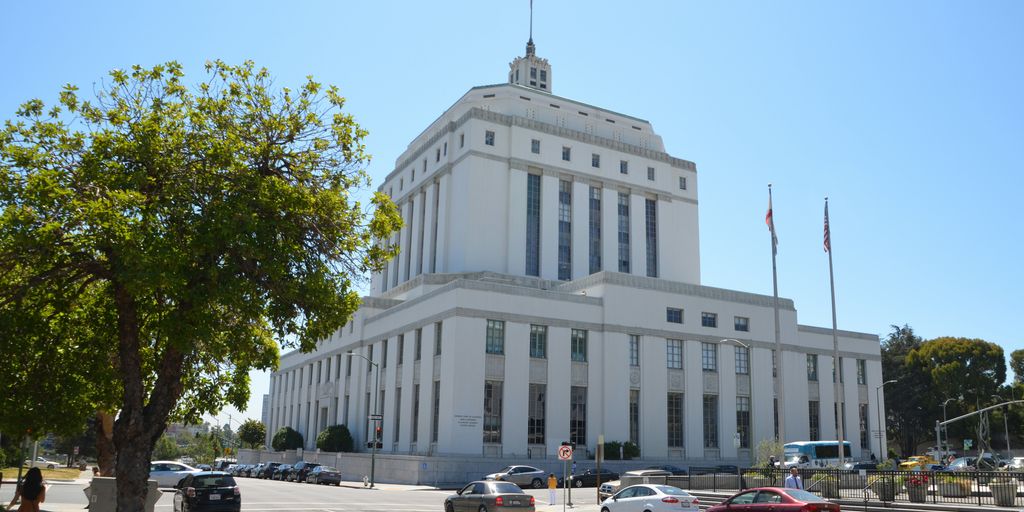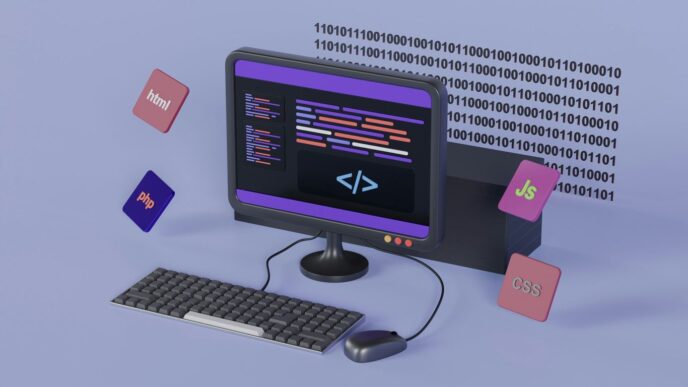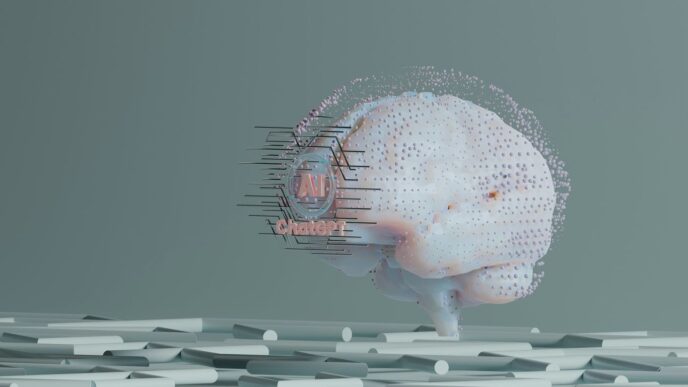So, California just passed some new laws about deepfakes. You know, those AI-generated videos or images that can make people look like they’re saying or doing things they never did? It’s a pretty big deal, especially with elections coming up and all the talk about protecting people’s privacy and creative work. It feels like the state is trying to get ahead of the curve with this technology, which is both good and maybe a little confusing for everyone involved. Let’s break down what this california deepfake law actually means for us.
Key Takeaways
- California’s new laws aim to make sure people know when they’re seeing or hearing AI-generated content.
- These laws are designed to give individuals more control over how their own likeness and voice are used.
- There are new rules specifically for deepfakes that show up in political ads and election materials.
- The legislation tries to offer more protection for people targeted by sexually explicit deepfakes, closing some legal gaps.
- The new california deepfake law is already facing legal challenges, particularly around free speech concerns.
Understanding California’s New Deepfake Laws
California is really stepping up when it comes to dealing with deepfakes. You know, those AI-generated videos or images that make people appear to say or do things they never actually did? They’ve been popping up everywhere, from funny memes to some pretty concerning political stuff. The state has passed a few new laws aimed at getting a handle on this technology, trying to make sure we know what’s real and what’s not.
The Rise of Deepfakes and Their Impact
Deepfakes aren’t exactly new, but the technology has gotten so good, so fast, that it’s becoming a real issue. We’ve seen fake images of celebrities, politicians saying wild things, and even some really disturbing explicit content created without anyone’s consent. It’s a bit wild to think about how easily these can spread online and how they can mess with people’s reputations or even influence public opinion. It’s becoming increasingly important to be able to tell what’s genuine and what’s been digitally manipulated.
Key Provisions of the California Deepfake Legislation
So, what are these new laws actually doing? Well, they’re trying to tackle a few different areas. One big part is about making sure people know when they’re looking at AI-generated content, especially in political ads. There are also rules designed to protect people’s likeness and voices, which is a big deal for actors and performers. And, importantly, there are measures to combat the creation and spread of non-consensual explicit deepfakes, which is a really serious problem.
The Legal Landscape of AI Regulation in California
California has been on the front lines of regulating new tech for a while now, and deepfakes are no exception. These new laws fit into a broader picture of how the state is thinking about artificial intelligence. It’s not just about deepfakes; it’s about setting a standard for transparency and accountability when it comes to AI. This is a developing area, and we’re seeing other states and even countries looking at similar issues, but California seems to be pushing the envelope a bit more with these specific AI laws.
Here’s a quick look at some of the key areas the legislation addresses:
- Transparency: Making sure you know if content is AI-generated.
- Creative Rights: Protecting performers’ voices and images.
- Elections: Preventing the spread of deceptive political deepfakes.
- Privacy: Combating non-consensual explicit deepfakes.
Protecting Individuals from Malicious Deepfakes

It’s a scary thought, but deepfakes can be used to really hurt people. We’re talking about fake explicit videos or images that look real, often created to embarrass or blackmail someone. This new California law is trying to put a stop to that, especially when it comes to sexually explicit content that’s shared without someone’s permission. It’s like an updated version of revenge porn laws, but for this new AI-generated stuff.
Combating Sexually Explicit Deepfakes
California’s SB 926 specifically targets the creation and spread of AI-generated explicit content. The law says if someone makes or shares this kind of material, knowing it will cause serious emotional distress to the person depicted, and that person actually suffers that distress, they can face penalties. This is a big deal because it closes a gap where victims of these fake explicit images had no legal recourse before. It’s all about stopping the harm caused by these fabricated images.
Addressing Non-Consensual Distribution of Content
Beyond just explicit content, the laws also look at the non-consensual distribution of any AI-generated material that’s meant to harm someone. Think about fake videos that make someone appear to say or do something they never did, with the intent to damage their reputation. The law aims to give victims a way to fight back against this kind of digital manipulation. It’s a tough area because the technology moves so fast, but the goal is clear: protect individuals from being targeted and harmed through these fake digital creations. This also means platforms have a role to play, as outlined in laws like SB 981, which requires them to have ways for users to report this kind of content and act on those reports. You can find more information about protecting your digital likeness at Digital Voice and Likeness Protection Act.
Legal Recourse for Victims of Deepfake Harassment
If you’ve been targeted by a malicious deepfake, you might have options. The law provides for civil lawsuits, meaning victims can sue for damages. This could include compensation for emotional distress, damage to reputation, and other harms caused by the deepfake. It’s not just about criminal penalties; it’s also about making the victim whole. Defending against these accusations often involves looking closely at the evidence, the technology used, and whether the person distributing the content actually intended to cause harm. Sometimes, arguments can be made about mistaken identity or that someone else created or shared the content without authorization. The key is that the law is trying to give people tools to fight back when their digital identity is misused.
Deepfakes and the Electoral Process

American elections are getting a bit messy with worries about AI messing with democracy. Think misleading voters, trashing candidates, and just generally polluting what we see and hear. While Congress hasn’t really stepped in, a bunch of states have started making their own rules about election deepfakes. California, for instance, passed a couple of laws to try and keep things clean.
Safeguarding Election Integrity with New Laws
California’s AB 2839, which kicked in right away, says that people, committees, or groups can’t knowingly put out ads or election stuff with fake AI-generated or changed content. This rule applies for 120 days before an election and, in some cases, 60 days after. Then there’s AB 2655, which started on January 1st. This one targets big online platforms – you know, the websites and apps with over a million California users in the last year. These platforms have to spot and remove fake election content during certain times, give people a way to report it, and then label that reported content at least 72 hours after it’s flagged. These laws are a big step in trying to keep election information honest.
Disclosure Requirements for Political Advertisements
These new laws also bring in disclosure rules, especially for political ads. The idea is that if content is AI-generated or manipulated and it’s about an election, people should know. This is meant to help voters make informed decisions without being tricked by fake videos or audio clips. It’s all about transparency in political messaging.
Platform Responsibilities in Election Campaigns
Online platforms have a bigger role now. They’re expected to actively identify and remove deceptive election content, especially close to voting days. They also need to have systems in place for users to report suspicious material. Plus, they have to label content that’s been reported. This puts more pressure on sites like X to manage what’s shared, though it’s a tricky balance with free speech. Elon Musk and X have won a court challenge against California’s strict ban on election deepfakes. This ruling really throws a wrench into how effective these state laws might be, showing that the legal landscape is still pretty unsettled. It’s a complex situation, and we’ll have to see how these rules play out in future elections.
Safeguarding Creative Rights and Digital Likeness
It’s getting pretty wild out there with all this AI stuff, right? One of the big worries is how it affects people’s creative rights and their digital likeness. Think about actors, musicians, or even just regular folks – their voice, their face, that’s their livelihood, their identity. Now, with AI, someone could potentially create a realistic digital version of them without asking, and that’s a huge problem.
California has been stepping up to address this. There are new laws, like AB 2602, that basically say you can’t just put a clause in a contract that allows for a "digital replica" of someone’s voice or likeness to replace work they would have done in person, unless the contract is super specific about how it’ll be used. Plus, if the person wasn’t even represented by a lawyer or a union when they signed, that contract provision is a no-go. It’s all about making sure people aren’t signing away their digital selves without really knowing what’s happening.
Another law, AB 1836, is looking out for the likenesses of deceased personalities. If someone makes or shares a digital replica of a dead person’s voice or image in a movie or song without getting permission first, they can be held liable. These laws are set to kick in soon, and they’re a big deal, especially with the ongoing strikes in Hollywood and the video game industry. Actors are pushing hard to make sure studios can’t just whip up digital copies of them without fair compensation or consent. It’s a tough negotiation, but these new rules give them some serious backing. It’s all part of a bigger picture, with even a federal bill, the NO FAKES Act, aiming to create similar protections nationwide. This is really about giving individuals more control over their own image and voice in this new digital age. You can find more information on the impact of deepfakes on home security.
Protecting Performers’ Voices and Likenesses
This is where the rubber meets the road for many in the entertainment industry. Laws are being put in place to stop companies from using a performer’s voice or image without their okay. It’s not just about stopping unauthorized use; it’s also about making sure performers get paid fairly if their digital likeness is used. The goal is to prevent situations where an actor’s digital double does their work for them, leaving the real person out of a job and without compensation. It’s a complex issue, especially when you consider the nuances of performance contracts and the evolving capabilities of AI.
Resolving Disputes in the Gaming Industry
The video game world is a prime example of where these issues are playing out. Game developers want to use AI to speed up production and cut costs, which often involves creating digital versions of actors’ voices and appearances. But the actors, understandably, want to ensure they have a say in how their likeness is used and that they’re compensated properly. The new California laws are expected to help settle some of these ongoing disputes, providing a clearer framework for both sides. It’s a balancing act between technological advancement and protecting the rights of the individuals whose talents are being digitized.
The Role of Consent in AI-Generated Content
At the heart of all this is consent. For any AI-generated content that uses someone’s likeness or voice, getting explicit permission is becoming non-negotiable. This applies whether the person is alive or, as mentioned, even if they are deceased. The idea is that your digital identity is yours to control. Without clear consent, using someone’s voice to sing a song they never recorded or their face to appear in a movie they never filmed is a violation. It’s a fundamental principle that’s being reinforced as AI technology becomes more sophisticated and widespread.
Transparency and Disclosure in AI-Generated Content
It feels like everywhere you look these days, there’s talk about AI creating images, videos, and even voices. It’s pretty wild how good it’s gotten, but it also means we need to be aware of what’s real and what’s not. California is trying to get ahead of this with some new rules focused on making sure we know when we’re seeing or hearing something that wasn’t made by a person.
Ensuring Awareness of Artificial Content
Basically, the idea is that if content is made or changed by AI, people should know. It’s about being upfront. Think about it like this: if a company uses a bot to talk to you on their website, they have to let you know it’s a bot, right? This is kind of the same thing, but for all sorts of media. It’s a way to keep things honest and stop people from being tricked into thinking something fake is actually real. This is especially important when you’re trying to figure out if you’re talking to a real person or interacting with a bot online.
Disclosure Mandates for AI-Altered Materials
So, what does this mean in practice? Well, for political ads, if AI was used to change the video or audio, there has to be a clear label saying so. This started in 2025. Then, starting in 2026, bigger AI companies that offer services to the public have to do a couple of things. First, they need to provide a free tool so people can check if content was made by their AI. Second, they should give users the option to add a disclosure to the content they create or alter. It’s all about making sure the source of the content is clear.
California’s Trend Towards Consumer Transparency
This isn’t totally new for California, though. They’ve been pushing for more transparency with new tech for a while. Remember that law from 2018 about bots? It made companies clearly state when you were talking to a bot. These new AI disclosure rules fit right into that pattern. It shows California is trying to keep up with technology and make sure consumers aren’t left in the dark about how things are made or who or what is behind them. It’s a move towards making sure everyone has the information they need in this fast-changing digital world.
Navigating Legal Challenges and First Amendment Concerns
So, California’s new laws about deepfakes, especially those involving elections and personal likenesses, have run into some serious legal hurdles. It turns out, making rules about what people can say or show online, even if it’s fake, is a tricky business. The First Amendment, which protects free speech, is a big part of this. Courts are trying to figure out where the line is between protecting people from harm and letting people express themselves, even if that expression is a bit wild or misleading.
Legal Challenges to the California Deepfake Law
Almost as soon as the laws were signed, people started suing. One big argument is that these laws go too far and violate free speech rights. For example, a lawsuit was filed claiming that the rules about election-related deepfakes were too broad and could accidentally silence legitimate political commentary or parody. This is a common theme when new tech regulations meet old legal principles. The courts are looking at whether these laws are too vague or if they unfairly target certain types of speech. It’s a complex legal dance, trying to update laws for the digital age without trampling on constitutional rights. A federal judge actually invalidated a California law aimed at regulating AI-generated deepfakes in elections, stating that the restrictions were too much. This ruling highlights the ongoing legal battles over AI content regulation.
Balancing Regulation with Free Speech Principles
This is where things get really interesting. On one hand, you have the desire to stop harmful deepfakes, like those used for harassment or to spread election misinformation. On the other hand, you have the First Amendment. How do you stop bad stuff without stopping good stuff, or even just neutral stuff? Think about political satire or artistic expression that might use deepfake technology. The courts have to weigh the potential harm against the right to speak. It’s a tough balance, and different judges might see it differently. The idea is to create laws that are specific enough to target the bad actors but broad enough to allow for protected speech.
The Debate Between ‘More Speech’ and Enforcement
There’s a big debate happening: should the answer to bad speech be more speech, or should the government step in and enforce rules? Some people argue that the best way to combat misinformation is to flood the zone with accurate information and counter-narratives. This is often called the ‘more speech’ approach. Others believe that certain types of deepfakes, especially those that are intentionally deceptive or harmful, require direct legal intervention. The challenge for lawmakers and courts is to decide when enforcement is necessary and when it might actually make things worse by chilling legitimate speech. It’s a constant push and pull, trying to find the right mix to keep the digital public square healthy and safe.
Penalties and Defense Strategies for Deepfake Violations
So, you’ve heard about California’s new deepfake laws, but what happens if someone actually breaks them? And more importantly, if you’re accused of doing something wrong, what can you do? It’s a pretty complicated area, and the penalties can be pretty serious. Getting caught distributing non-consensual deepfakes can lead to significant legal trouble.
Consequences of Violating California’s Deepfake Laws
California is taking a firm stance against the misuse of deepfake technology, especially when it involves non-consensual explicit content. The penalties can vary depending on the specifics of the case, but they’re not something to take lightly. For instance, distributing deepfake content without consent can result in fines of up to $2,500 for each violation. If the situation is deemed a misdemeanor, you could be looking at up to a year in county jail. In more severe cases, especially those involving minors or repeated offenses, felony charges could even apply. It’s a complex legal landscape, and understanding these potential consequences is the first step.
Understanding Penal Code 647(j)(4)
At the heart of many deepfake cases in California is Penal Code 647(j)(4). This law specifically addresses the distribution of intimate or sexually explicit material of another person without their permission. What’s key here is that it covers both real and fabricated content, meaning AI-generated or deepfake images are treated the same as actual photos or videos. The law focuses on the intent behind the distribution – if it’s meant to harass, embarrass, or cause harm, it’s illegal. So, even if the image isn’t real, the act of sharing it with malicious intent can lead to legal action. This part of the law is really about protecting people from having their likeness used in harmful ways, regardless of how the content was created. You can find more information about these laws on the California legislative information website.
Key Defense Strategies Against Deepfake Accusations
If you find yourself facing accusations related to deepfake content, it’s not the end of the world, but you’ll definitely need a solid defense. Several strategies can be employed, depending on the facts of your case. Here are a few common approaches:
- Lack of Intent: Arguing that you didn’t have the intention to harass, embarrass, or harm the person depicted in the content is a primary defense. The prosecution often needs to prove this intent.
- Consent: If you can demonstrate that consent was given for the creation, possession, or sharing of the material, it can be a strong defense.
- Mistaken Identity or Unauthorized Access: Sometimes, the defense might involve showing that you weren’t the one who created or distributed the content, or that someone else accessed your accounts without permission.
- Challenging Authenticity: Questioning the origin or authenticity of the digital images themselves can be a valid defense. This might involve proving that the content doesn’t actually depict the person it’s claimed to depict, or that it was fabricated by a third party.
- Evidence Scrutiny: Defense attorneys will often look for flaws or gaps in the prosecution’s evidence, such as how digital files were handled or stored. This is where expert analysis of digital evidence becomes really important.
Navigating these defenses requires a deep understanding of both the technology and the law. It’s always best to consult with a legal professional who specializes in these kinds of cases.
Wrapping Up: California’s New Deepfake Laws
So, California is really stepping up to tackle the whole deepfake issue. They’ve put some new rules in place, trying to make sure people know when they’re looking at fake stuff, especially when it comes to elections or private content. It’s a big deal because it affects how we see things online and who controls our digital image. Of course, not everyone is thrilled, and there are already some legal fights happening, mostly about free speech. It’s going to be interesting to see how this all plays out and if other states follow California’s lead. For now, it’s a reminder that technology moves fast, and the laws are still trying to catch up.
Frequently Asked Questions
What exactly are deepfakes and why is California making new laws about them?
Think of deepfakes as super-realistic fake videos or pictures made with computer tricks. They can make it look like someone said or did something they never actually did. California has made new rules to help stop people from using these fake creations to harm others, like spreading lies or making fake adult content.
What do these new California deepfake laws actually do?
California’s new laws are like a shield for people. Some rules focus on making sure you know if you’re watching or reading something that’s been faked by a computer, especially in political ads. Other laws protect actors and performers by giving them more control over how their voice and image are used by AI. There are also laws to stop fake, explicit content from being shared without someone’s permission.
Do these laws have anything to do with elections?
Yes, some of these laws are specifically designed to protect elections. They make it harder for people to spread fake videos or audio about candidates or elections close to voting day. The goal is to keep voters informed with real information and prevent fake content from messing with election results.
How do the new laws help stop fake explicit content or ‘revenge porn’?
One of the biggest worries is fake explicit content, often called ‘revenge porn,’ made using AI. California’s new laws help close a gap that existed before. Now, if someone creates and shares fake explicit material of another person without their consent, knowing it will cause them distress, they can face legal trouble. Social media sites also have new rules for handling reports of this kind of content.
Are there any worries that these laws might go against free speech?
The laws try to balance protecting people with the right to free speech. Some people worry that the rules might go too far and limit what people can say or create, especially for things like satire or art. There are ongoing discussions and even legal challenges about where to draw the line so that harmful deepfakes are stopped without unfairly limiting expression.
What happens if someone breaks these deepfake laws?
Breaking these new California laws can lead to serious consequences. Depending on what was done, penalties could include fines, jail time, or even having to register as a sex offender if the deepfake involves explicit content. Victims can also sue for damages. It’s important for anyone accused of breaking these laws to get legal help right away.














